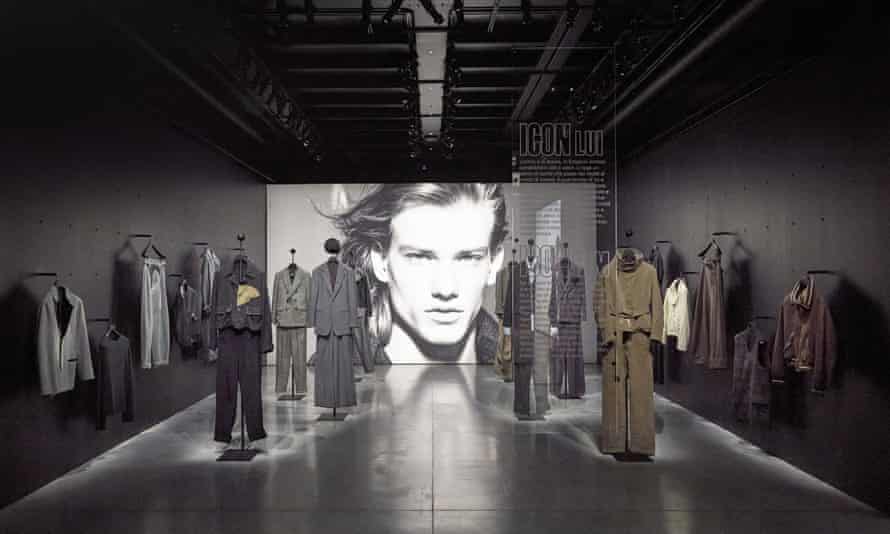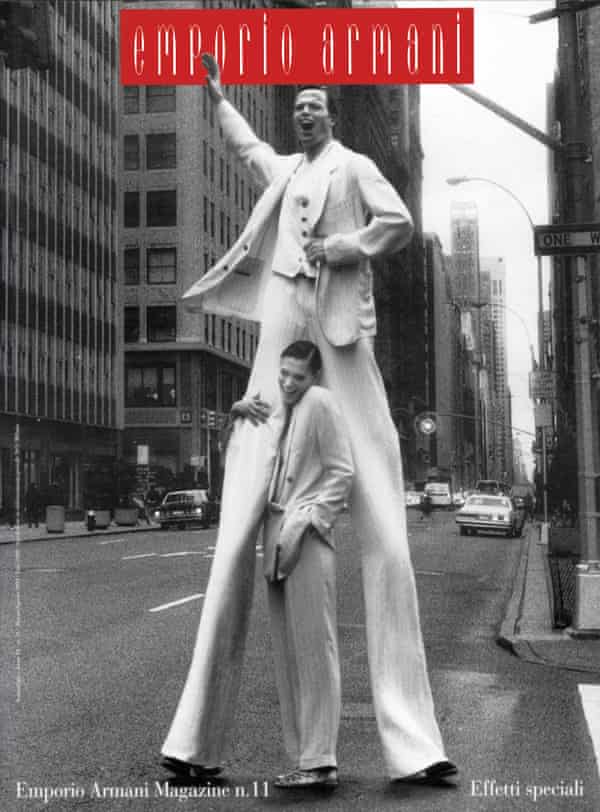“As ever for me, the best ideas are the intuitive ones:” Giorgio Armani is musing on his era-defining casting of Posh and Becks in his advertising campaign for Emporio Armani underwear back in 2008. “In those years, David and Victoria were at the center of attention,” he recalls. “In the mirroring of their respective personalities, they embodied the moment: the metrosexual man, and the seductive woman with a fierce entrepreneurial outlook on things. And they both paid utmost attention to their physical appearance [so] having them in underwear looked like the right idea … and it took very little effort to persuade both.”
Armani – or Mr Armani as the fashion industry unofficially-officially refers to him – is a man who is no stranger to having the right idea. Aside from his multi-billion-pound Giorgio Armani empire, his Emporio Armani brand for which he managed to get the world’s most-talked-about couple down to their pants for is case in point. Established back in 1981 as a more liberal multi-platform to complement his eponymous mainline after seeing “a gap in the market and hunger from younger people for something new and fresh”, he proudly marked its 40th anniversary this year with an exhibition in his native Milan chronicling its trajectory.

“I wanted to show how innovative the brand has been since its very beginning,” says 87-year-old Armani who famously, like many designers of his generation – most notably the late Karl Lagerfeld – is “fiercely anti-nostalgic”. Initially, he says he “resisted the idea” of the exhibition but ever young at heart he says he “changed my mind when we switched from the retrospective format to adopt the concept of the exhibition as an experience and a lively manifesto”.
A visual blitz through the past, The Way We Are is very much Armani’s homage to living in the present, documenting key moments such as its first menswear and womenswear catwalk shows in 1985 and its iconic campaigns shot by the likes of Mert Alas and Marcus Piggott, Peter Lindbergh and Armani’s longtime collaborator Aldo Fallai.

“Honestly, it feels like an achievement,” reveals Armani in a rare self-congratulatory moment. “The collection that stemmed from my desire to talk to the younger generations evolved into an essential part of the Armani lifestyle as a whole: one that speaks a metropolitan language that still retains my pared-down, essential idea of elegance.” The first years of the brand, he continues, “are the ones I am most fond of, quite simply because we kept experimenting in order to find the right communication language, the perfect tone of voice for a collection that was so new.”
If that sounds like familiar rhetoric in the current age of brands rushing to “speak” to Gen Z, back in 1981 Armani’s methods were pioneering. One of the most mined assets belonging to Emporio Armani for the exhibition is the brand’s huge glossy bi-monthly magazine which was launched in 1988 and helped to lay the foundations for the fashion industry adopting the concept of combining content with commerce.

“Today, it’s normal for fashion brands both large and small to produce content of all kinds, but in 1988, Emporio Armani Magazine was something new,” says Armani, crediting his sister, Rosanna in helping him “create a product that was much more than a catalogue: a real magazine, in which photographic reports on the collection … were accompanied by articles dedicated to the most diverse topics, written by prominent authors.”
To mark the brand’s anniversary, Armani commissioned a special issue of the publication for which features current Italian icons, including the Ferrari F1 drivers – and Armani ambassadors – Charles Leclerc and Carlos Sainz in conversation; the actor Pierfrancesco Favino on what it means to be an actor; and GQ-famed editor Masafumi Suzuki on the power of the suit alongside shoots of current collections.
“I think printed matter will never die, because in the age of transience, it stays,” he says. “That is the statement I wanted to send out with this special, one-off issue of the magazine. I wanted to offer a picture of this moment that in twenty or forty years’ time will still feel relevant and timely.”
The anniversary couldn’t pass without an ode being made to Milan, the city to which Armani is considered royalty. The hangar in the city’s Linate airport which has greeted arrivals with Emporio Armani in shimmering sky-scraping signage since 1996 is celebrated in all its dominant glory (“[I] love people to feel welcomed in a city that has always expressed modernity, energy, an optimistic outlook towards the future; an international metropolis with an Italian soul, exactly like Emporio) and the famous “Broletto” billboard in central Milan that, as well as the Beckhams, saw Cristiano Ronaldo and Rafael Nadal supersized in their underwear (he has a soft spot for sport, he admits, by virtue of the “discipline, hard work and teamwork” he relates to) both take centre stage.

“I am quite proud of the fact that the Broletto billboards have become part of the Milanese urban landscape and as such a landmark,” he says. “What started as a fresh idea – adopting the bold language of traditional advertising and bringing it into the fashion world – has turned into a series of endless surprises that engage and entertain whoever passes from that spot.” During the pandemic, Armani – who donated more than €2m to hospitals in Milan, Rome, Bergamo, Piacenza, and Versilia in the devastating first few months – eschewed advertising on the billboard to instead “send out messages of hope, support, and happiness. It is a blank canvas that allows me freedom to communicate in a very direct way, and I truly enjoy it.”
It’s a sentiment that he applies to his vision for Emporio Armani in its 40th year and for the future. “It stands for a set of values that are not merely aesthetic even though they are based on my appreciation for simplicity and elegance,” he says. “The only way to push boundaries is to keep looking at the world, at the evolutions of society, and act inventively. Fashion, for me, is always a reflection, and at times also an anticipation, of the moment.”
Emporio Armani – The Way We Are is on display at Armani/Silos in Milan until 6 February 2022







More Stories
Gu, Neymar, Asher-Smith among Olympians at Paris Fashion Week 2023
Where Were You for the Big Bang? The Palais Galliera Considers the Pivotal Fashion Year of 1997
Victoria’s Secret fashion show to return with ‘new version’